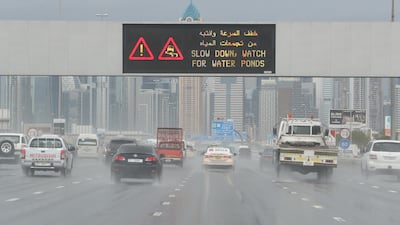
The UAE is stepping up efforts to increase road safety. Pawan Singh / The National
The UAE is stepping up efforts to increase road safety. Pawan Singh / The National
UAE minister launches nationwide road safety drive
Suhail Al Mazrouei, Minister of Energy and Infrastructure, unveils plan focusing on accident hot spots and flood-risk areas
The National
August 01, 2023


